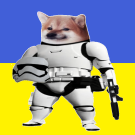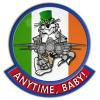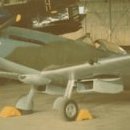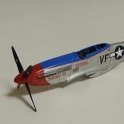Search the Community
Showing results for tags 'ukraine'.
-
Hi all! This BMD-1 from S-Model is perfect! I love this kit so much, it have really sharp details, nice fit, and i just love BMD's. Painted by guze and tamiya, weathered with oil paints, and ICM. It inspired by two bmd's that i seen in anti-terrorist operation zone in period of 2014-2018. This BMD's Hope you like it
-
https://www.reuters.com/world/europe/germany-send-ukraine-six-sea-king-helicopters-air-defence-2024-01-23/ I know the Sea King is a marvellous bit of kit ....but air defence....journalists eh . Still another 6 aircraft
-
Ok this STGB came up way quicker than I expected, but the Turd is finished so there’s room for this build. The model is ICM’s wonderful MiG-25 RBF, the main reason I bought it (it was some time ago) was for that crazy scheme on the box, bonkers and I love it... ..... and yes not to disappoint some or to cause worry about my mental health, there is some AM bits as well ..... .... some nice new cans, I did have some resin wheels for her, but I stole them for the M-G-25 PD. So I had to go shopping for more, well that’s my excuse! ...and along the way these fell into the basket as well! Now these Reskit U/c bits.....WOW!!! They are so finely detailed and printed, they even have special instructions, 20+ steps on how to release them from their cages! Finally, the scheme, well as much as I liked that crazy box art one I am now building on a theme so she will be a Ukraine bird. For this I’m using one of FoxBot’s wonderful decal sets. They give you a choice of RBF, RBS, and RBT versions. I’ll be building the RBT, the scheme of which is on the other side of this picture! Plus I’ll be using FoxBot’s stencils. When they were in the early designing phase of the Foxbat, they wanted to know what the secret was to producing the ultimate fighter/interceptor! At that stage it was the Phantom and thought the secret to its success was all the stencils on it, so they decided to go one better! Instead of the thousands of stencils as on the Phantom they put billions on the Foxbat!!! Oh dear....I’m going to be playing “Where’s Ivan” for the next year or so with these! The reason why I still haven’t finished the PD!! There should be a nice quick build, no nasty surprises with this model, plus I’m be fitting the new cans as I build the model, not right at the end as I did with the PD......and you there will be a thread for that one.
- 27 replies
-
- 13
-

-
PzH 2000 - 1/24 Scale - Scratchbuilt I present my recently completed model of a Panzerhaubitze 2000 self propelled howitzer in Ukrainian armed forces service. Originally my intent was to paint this model as a german gun in Afghanistan, but very unfortunately about half way through this build, the war in Ukraine escalated dramatically. As a consequence several of these extraordinary weapons have been dispatched to the conflict and I have changed the markings to represent one of these as it may appear today. This project ran for over three years and, by my very rough reckoning, has absorbed at least 300 hours of my time. The model is completely scratchbuilt using a wide variety of materials including, wood, MDF, plastic-sheet, brass, poured-resin, aluminium lithoplate, a few dabs of filler and - very occasionally - bits and pieces scavenged from injection molded kits. No 3D printing was used. The last photo is intended to show the size of the finished item. It’s a fairly large model. The whole WIP story is documented here: Building models this way is always a learning process. For me the chief lessons learned were: How to scratchbuild tracks; which is actually not too bad once you know how. MDF is a really useful material, especially when skinned with plastic-sheet or aluminium lithoplate. Acrylic laquer paints are really very good. In this case I've used SMS paints and am definitely a convert. Figures can be scratchbuilt, although not easily. Magnets can be used to hold movable parts steady when required. In this case once the gun's elevation is set it's held in place by a couple of strong magnets inside the turret. There are some really good modern glues out there including Selly’s Powergrip and Gyprock’s blue acrylic joist paste. Careful attention to precise and accurate measurement at every stage really pays dividends. A good set of digital calipers are an indispensable tool. That's it for this project. Sincere thanks to all that have shown interest in this, especially anyone who has commented or posted 'likes'. As always, without the support of the Britmodeller community I don't know that I would have completed this. I hope to see you soon on the maritime pages as the SS Xantho gets yet another KUTA! Very Best Regards, Bandsaw Steve
- 29 replies
-
- 42
-

-
- Artillery
- Scratchbuilt
-
(and 1 more)
Tagged with:
-
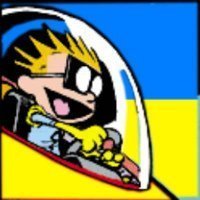
Ukrainian Bradley 1/72 Revell M2 A2
Lightningboy2000 posted a topic in Ready for Inspection - Armour
I first purchased this kit at the Holbeach 2022 show & thought I'd start putting it together at our club table there & then. It was a random purchase & something to do in between my usual fast jets. I didn't complete it till later this year & after seeing these Bradley's being used in Ukraine in 2023 I thought why not make it topical & found some reference pics online of Ukrainian Bradleys in a pixellated paint scheme, which was made up from hand cut masks more or less copied straight from photos of an actual Ukrainian pixelated example. All paints are Ammo Mig as is the weathering pigments & washes. The added on stowage was a resin set from Legend productions. Oh and a photographic cheat for the interior! Thanks for looking! Martin- 11 replies
-
- 25
-

-
Hi everyone, this model was made for contest. Theme of this contest was to give 15 same corvettes for peoples, and make some scratchbuild to make "what if" UAF corvette in Mad Max style. On my model i use parts from Trumpeter stryker, ICM King Tiger, and Trumpeter M1117. Hope you like it!
-
Kozak-2 Ukrainian MRAP-Class Armoured Vehicle (35014) 1:35 ICM via H G Hannants Ltd The Kozak Mine Resistant Ambush Protected (MRAP) vehicle was developed in response to a need for protected troop transports for reconnaissance, patrolling and other such tasks, and was first seen in 2014, although only a few proof-of-concept vehicles were made by Practika, in competition with several other types from other manufacturers, the Kozak going through to the next stage as one of the three that met the Ukrainian Army’s requirements. The original vehicle is based upon a heavily modified Iveco Eurocargo chassis, but this 2015 design is based on the Iveco Daily, which has a shorter chassis, resulting in a more compact vehicle. Looking at any of the variants side-by-side you wouldn’t think they were related to anything, as the outward differences are so great. It doesn’t have a sharply V-shaped hull in the same respect that custom designs do, but most of the chassis length is protected by a shallower V-shaped armoured panel that underpins the crew compartment, and in concert with the anti-trauma seating that is installed within, it satisfies the needs of the Ukrainian forces in the event of an IED detonating underneath. The exposed wheel stations would probably be sacrificed in the blast, but the diversion of the explosive energy away from the crew is the key aspect. After the initial design, the improved Kozak-2 was engineered, incorporating a weapons station on the roof that allows the operator protection from small-arms fire, with vision slots that are protected by armoured glass in each of the side wall panels, plus a splinter-guard with more vision slots at the front, through which the machine gun projects, which can either mount an NSV heavy machine gun, or a 7.62mm weapon, depending on availability and mission requirements. The Kozak-2 entered service in 2017, and has seen plenty of active service since the unlawful invasion of Ukraine that began on 24th of February 2022. The Kit This is a brand-new tooling from ICM of the Kozak-2, and has been made in cooperation with the vehicle’s manufacturers Practika, as noted on the box top in the top right, which bodes well. The kit arrives in a top-opening box, with a captive flap on the lower tray, and inside are seven sprues of grey styrene, two identical clear sprues, a bag containing five flexible black plastic tyres, a small fret of Photo-Etch (PE) of a copper-coloured metal, three decal sheets, and the instruction booklet that is printed in colour on glossy paper, and has profiles on the rear pages to help with painting and decaling. Detail is excellent, and as it’s a home-grown product, local knowledge will have come in very handy, as will their nearness for detail checking, although the vehicles have been rather busy of late, working tirelessly to recover parts of their country still occupied by the invader. Construction begins with the chassis rails, which have a leaf-spring attached to the front, and two double-leaf arrangements that are each made from two halves at the rear. Small armour plates and other parts are fitted to the frontmost sides, then the cross-members are built up, with two under the engine bay, a central four-part transfer box at the midpoint, a tough braced bar behind that, and another at the rear. Under the rear suspension is an additional cross-rail, plus a braced rail that has a pair of two-part tanks applied, one on each side before mounting. The solid floor pan is detailed with a three-part representation of the underside of the engine and sump, then the chassis rails are mated to the underside on tabs, adding a short drive-shaft that links the transmission to the transfer box, ready for when the axles are completed. The front axle is a thick assembly with differential bulge in the centre, which is made from two halves, and has the rear of the hub attached at the ends, and a damper bar that joins to the chassis via links, and the drive-shaft that links it to the transfer box. A steering actuator and two armoured plates are fitted over the newly mounted axle, adding two dampers to the rear, and a C-shaped linkage that joins the two hubs together. The rear axle is built from four parts, and is much bulkier than the front, as are the hub assemblies, which are each four parts. This is then glued to the leaf-springs, adding dampers, drive-shaft, damper bar, another cross-member and a towing shackle at the rear. The interior of the Kozak-2, which if you haven’t already guessed means ‘Cossack’, is a spartan compartment that is designed for a purpose and nothing more, keeping weight and clutter to a minimum, as well as reducing the likelihood of small parts becoming missiles in the event of an IED detonation. The crew seats are made first, making the back from cushion and backrest, then adding this to the base cushion and two concertina-style side panels, plus front and rear sections, taking care to line up the concertina elements to minimise clean-up. An adjustment lever is fixed under the front edge, and you should bear in mind that the seats are handed, so take care to fix the correct one to the tread-plated floor on its guide-slots. A small gear lever is made from two halves and inserted into the centre console, which is moulded into the floor. The dash is a single moulding that has the three foot pedals glued into the lower portion, then has the multi-part steering wheel, column and separate stalks fitted on the left side, with a gaiter and hi/low ratio knob mounted in the centre of the dash low down. There are three undocumented decals for the dials and controls on one of the sheets, two of which are pretty obvious where they go, but remember to paint the instrument binnacle black before you put the decal on. The dash is mounted on a central locating guide in front of the crew seats, and behind and between them a four-part rack with crew step/jump seat that has anti-slip tread-plate moulded into it, and acts as the support for the gunner when he is in action, folding away when not in use to keep obstruction to a minimum. Two passenger seats are built with two-part backs, adding safety tubing to the sides and top that helps prevent flail and neck injuries, fixing onto the seat cushion that has more U-shaped tubes glued underneath that project up and help keep the sitter’s body in position in case of a sharp sideways jolt. A back frame and a pair of shock-absorbing tubes attach the frame to the deck behind the driving crew, facing forward. The other six seats are fitted centrally with three on each side facing left and right. The base cushions are all moulded as a single linked unit, to which the lower tubes are fitted, adding two central supports in the space between them, then adding the backs, which are built at the same time as the first pair. This assembly is then mounted on a pair of raised rectangular areas of the floor, ready for the body to be built up. The vehicle sides are one part each, and cover the entire length of the chassis, adding radiused bullet-proof windows in the sides, a foot-plate at the front, and drilling out four 1mm holes as indicated in a scrap diagram nearby. An interior skin is prepared by adding grab-handles and weapon stowage clips under the windows, with the inner face of the shooting loupes moulded into the surface. The laminated right side is offered up to the chassis, adding the front wing liner and inner panel to the engine bay at the same time, then doing the same for the left side, before working on the windscreen panel, which has two panes inserted into the frames, and two instruments applied to the centre frame on the inside. This is mated to the bonnet and two windscreen wiper blades are fitted into pockets in the bonnet before joining the two. The rear bulkhead has an inner and outer skin, then has the multi-part bumper and clear light clusters applied to the lower edge. It would be a good idea to prepare the front and rear panels at the same time as the sides, not just for ease of painting, but also to ensure that the side panels are mounted to the correct angle and can’t sag while the glue cures. The roof has four small parts fitted to the underside before it is glued in place, completed with a pair of moulded-in escape hatches and the circular cut-out for the roof-mounted weapons station. The grille is fitted to the front of the vehicle, and has a thick bumper with moulded-in reflectors for the clear lights that are installed and painted with suitable clear shades, then have protective cages folded from PE parts, with a winch housing between them. The front skirt is made from two layers and has small sensors fitted into recesses, then is assembled on the front with the bumper, and a cow-catcher that is built from eight parts, including three slats that protect the grille. The Kozak-2 has four side doors, two on each side, all of which have inner and outer skins plus glazing, with grab handles fitted inside, and handles on the outside, while the front doors have wing mirrors on C-shaped tubular frames, and the rear doors have a circular cut-out that doubles as firing loupe for the front passengers. The back doors are similar in construction, but with a smaller fixed window near the top, inserting into the frames at the rear. All doors can be mounted open or closed as you please. Inverting the model allows fitting of the shallow anti-mine keel panel, which has the ends closed off to prevent ingress of the explosive wavefront, which would reduce its effectiveness. Mudflaps are added to the rear of the front wheels, and on both sides of the rear wheels, then the wheels are made to fill the arches. The spare tyre is built first, adding a two-part hub from either side of the flexible tyres, and mounting it under the body at the rear. The rear pair of wheels have a slightly different pair of hub halves inserted from each side, and then have a choice of two styles of dust covers fixed over the outer face. The front wheels have similar two-part hubs, with an additional centre insert, and the same choice of dust covers over the front. They all fit onto their appropriate axles, but don’t put the model on its wheels just yet. There are a pair of crew steps to be fitted onto the keel panels under the rearmost side door on both sides, then the model is turned right-side up for all the external detail to be added to it. The first item is a searchlight, which has a clear lens and opaque rear, mounting on the right wing in front of a small part near the scuttle. A perforated mount for the pioneer tools is filled with four hand-tools before it is mounted on the right rear of the body. A two-part cage is closed around the searchlight, and completed by adding two top bars, and a bracket that stands out past the side of the wing for another mirror that is added later. Under the tools a pair of three-part brackets are mounted on recesses, and on the opposite side a pair of towing arms are fitted under the windows on pins. Two small lifting eyes are glued to the scuttle, and an LED lamp with armoured shroud fits into a pair of recesses on the left wing. What looks like a tubular convoy light in a shroud is added to the centre above the rear doors, and five rungs are glued to the left side of the rear for access to the roof, with a sixth on a bracket that hangs down below the bodywork, adding a jerrycan in its holder to the left. Grab handles are fitted between and above the side doors, on the roof above the ladder, and on the front and sides of the bonnet to ease access to all the horizontal panels, and on the right flank, a cage is fixed to the body for additional storage. The detailing is still far from over though, as the wing-mounted indicators and roof-line repeaters are positioned, with the more exposed lower wing lights protected by four half-torus PE guards that create a cage around them on both sides. PE cages are added around the rear lights too, bending the ends to match the profile, then adding a pair of stirrups below the back doors. A plate is glued to the left door frame to accept a two-part exhaust that allows the vehicle to plough through water up to a metre deep without stopping to prepare. The right door frame has another assembly made up from five parts, which looks like an emergency flasher, but clearly isn’t. The machine gun turret has a pair of smoke grenade launcher assemblies made up with three barrels each on a carrier plate that is fitted to the front corners of the assembly. The two side armour panels have their bullet-proof vision panels inserted from inside, and are then assembled onto the base, which has a circular ring with bayonet lugs fixed to the underside, and moulded-in stiffeners on the top surface to keep the armour at the correct angle, even under fire. The D-shaped crew hatch is given a pair of handles, and is then fixed into position in the turret floor, adding an A-frame mount for the machine gun, which needs a 1.2mm hole drilling to accept the weapon, which is built up from a breech with moulded-in barrel that is clamped between two mounting halves, with handle added to the rear and ammo feed on the top, linked to a three-part ammo box as it is slipped into the splinter shield, which also has two vision blocks inserted from within. The completed gun is then lowered onto the mount, securing its pin into the hole drilled earlier, then finishing off by adding a rear-view mirror on a U-bracket, a hand-traverse wheel on the underside, and a wire across the back of the turret. The completed assembly then drops into the cut-out and is rotated to lock it in place. Markings There are four options on the decal sheet, all with a base coat of green, and various digital camouflages applied over the top. From the box you can build one of the following: KOZAK-2, 35th Separate Marine Brigade of Ukraine, January 2021 KOZAK-2, 36th Separate Marine Brigade of Ukraine, August 2021 KOZAK-2, reconnaissance unit of the Armed Forces of Ukraine, November 2022 KOZAK-2, an unknown unit of the Armed Forces of Ukraine, autumn 2022 Decals are by ICM’s usual partners, which is a guarantee of good registration, sharpness and colour density, with a thin gloss carrier film cut close to the printed areas. As previously mentioned, there are three instrument decals supplied on one of the sheets, but these don’t appear to be mentioned on the instructions, so you’ll need to apply a little deductive reasoning to locate them, as A3 isn’t so obvious where it should go. Conclusion The brutal and unprovoked invasion of Ukraine has put focus on Ukraine’s defence systems from an outsider’s point of view, and it’s good to see that their equipment is being kitted for us modellers, so we can show support in some small way for their fight. It’s a good-looking kit, and apart from adding some window blinds, strap for the top gunner, and a few cables in the passenger compartment, it’s an excellent rendition of the type. Hopefully, we’ll see some of the longer-wheelbase variants in the future. Highly recommended. Available in the UK from importers H G Hannants Ltd. Review sample courtesy of
-
I based the build on photos from 2022 Ka-52s in action in the invasion of Ukraine. Early invasion aircraft saw their red stars, bort and registration numbers all covered up with various spray paints. The Russians don’t seem to be so concerned with hiding aircraft ID in action in 2023. Camouflages of aircraft in action vary with glossy mustard tan and dark green newly built aircraft sporting colorful bort numbers, the faded 'eggplant' dark grey versions and the chosen subdued example below with the often seen 'V' on the sides and belly. I used the Italeri Ka-50 and Neomega Ka-52 conversion, not the Arma-Models 3d printed kit. Neomega's cockpit as usual is full of details and great seats. No complaints here. Rotor masts got some extra details. Neomega get the ball rolling with its conversion set but leaves a lot of things out. Studying photographs showed a lot of omitted details, mainly sensors and antennas that would need to be scratch built. The forward fuselage fits fairly well with the Ka-50 rear fuselage, it did take some sanding though not as bad as I feared. I aligned it so most of the coarse sanding was on the bottom. A lot of various aftermarket products used, most importantly Metallic Details who provided quite a few high quality Ka-50 improvement sets that I used including exhausts and intakes, new wings, pylons and weapons. The rivets needed to be added as well. After painting I added Begemot stencils and other tiny decals. All the identifying stars and numbers were sprayed over and the invasion V signs added.
- 32 replies
-
- 61
-

-

-
Hello all, Picked up Trumpeters 1/72 M2A2 Bradley kit recently after it was announced my country has donated a good number to Ukraine. I know very little about this vehicle, but my understanding is its an effective weapon and will be very helpful in the near future as Ukraine attempts to remove their enemy from their country. I've never built any Armor kits before, so this will be a first for me. I also plan to learn how to apply panel washes and weathering to the finish, something I actively avoid and have little experience with. However, 2 weeks ago was my local IPMS show, and a majority of the tanks there (well over a hundred) had weathering, which looked great. I've started watching some videos on youtube about it, but if anyone has advice, im all ears. Hopefully I can finish this before I have to add ERA 😆
-
HESA Shahed 136/Geran-2 (PLT279) Planet Models by Special Hobby The Shahed 136 autonomous drone, which translates to “witness” in English, rose to prominence after the unprovoked invasion of Ukraine on 24th February 2022, when it was later rumoured that Iran was exporting these simple drones for use by the Russian aggressors, which was confirmed following the recovery of remains of several destroyed examples in Ukraine. The drone is a simple piece of equipment that has been put-together using off-the-shelf components, many of which either originated in the West, or were designed there and manufactured overseas. In Russian service they are designated as Geran-2, which means Geranium. It is thought that the Russians are now manufacturing the larger components themselves, importing only the specific electronics and other parts that would be more difficult to manufacture at short notice. They are powered by a reverse-engineered copy of a Western designed piston engine that drives a two-bladed pusher propeller, and they are noisy in operation, which makes them an easily identified target for Ukrainian snipers or anyone else with a gun and a scope to take a pot-shot in aid of their nation’s defence. Although their payload is relatively small at an estimated maximum of 50kg, they are cheap to produce, and despite their vulnerability to ground-fire, are hard to hit by other types of weapons, particularly aircraft as their radar can’t lock on easily, and the speed differential is significant. The use of a technological successor to GPS by the Russians has increased their accuracy and extended loiter time, waiting for targets of opportunity to travel into their vicinity. They are launched from a ramp, sometimes in a rack of up to five drones on the back of a truck, using a RATO pod under the centre-line of the delta-winged drone to gain height and speed, after which it is jettisoned and the prop takes over. There is speculation about the aircraft’s range, with a maximum of around 1,500 miles, but with a top speed of 115mph it would take many hours to reach a target deep within Ukrainian territory, with plenty of opportunities for interception by the eagle-eyed locals. The Kit This is a brand-new mixed media kit from Special Hobby’s resin specialist brand Planet Models, although it includes traditional and 3D printed resin, and injection styrene parts inside the small cardboard box. There are seven grey resin parts, five 3D printed parts in orange, a sprue of grey styrene, and a decal sheet that provides the minimalist stencils applied to Russian and tail-codes for Iranian airframes. It’s a very small model for obvious reasons, and all the parts are easy to remove from their casting and printing blocks, and we’re all very familiar with removing styrene parts from sprues. Construction begins with the liberation of the parts and clean-up, then the support frame is made from three styrene parts from the sprue, plus four resin castors on circular bases. The drone is moulded almost complete, needing just the fins and rudders to be glued to the wingtips, two pieces of wire or tube from your own stock inserted into recesses in the leading edges of the wing, and the nicely detailed piston-engine slotting into the rear. The RATO pack installs on a bracket and slot under the fuselage, and that’s it. You join the two assemblies together, the nose support fixing into a hole under the nose at the bottom of a retaining strap that is moulded into the drone itself. Markings There are three Russian and two Iranian tail-code options, and for the Russian airframes there are No Step/Don’t Push stencils for each of the horizontal control surfaces. The aircraft is painted an off-white all over, while the engine is different metallic shades, and the RATO pod is black. The trolley is dark grey with silver castors and rubber tyres. If you need further information, there are plenty of pictures online. Conclusion A well-executed model in my favourite scale of an interesting drone from the modern era of drone-based warfare, even though it’s on the side of the aggressor. They make quite a bang when they’re shot down, so you know when you’ve hit one, which is always good. Highly recommended. Review sample courtesy of
-
Hi everyone, So I decided to give this one a go which was kindly gifted to me by @chiefwiggumfrom Telford last year. That box-top Civil scheme from the Aero Club of Ukraine looked the business. AMK_L-29_Delfin_box by Dermot Moriarty, on Flickr I've never built an AMK kit before but seem to have a good reputation. I think this is scaled down from their 1/48 kit? This is a small wee jet for 1/72 but beautiful detail throughout and includes a small P/E set for the flaps. AMK_L-29_Wip_Sprues by Dermot Moriarty, on Flickr Going to be OOB, save for some belts from tape. Lovely quilted cockpit detail... AMK_L-29_Wip(1) by Dermot Moriarty, on Flickr Some parts to be painted - you get a very nicely detailed nose bay (top and bottom) and a fan/exhaust, neither which will be visible. AMK_L-29_Wip(5) by Dermot Moriarty, on Flickr Thanks for looking, more soon! Cheers, Dermot
-
Journalists in War (35751) 1:35 ICM via H G Hannants Ltd It’s an important part of war that the truth gets out to the wider world, at least within the constraints of operational security. We’re all painfully aware of what’s been going on in the Ukraine over this last year, and the press have been in the thick of it, providing the world at large with a more honest representation of the facts that the invader. They often wear body armour and a MICH style covered helmet when they’re close to the front, with blue fabric and the words PRESS emblazoned in white in the hope that it will prevent the invader from firing on them. Sadly, that’s not always the case, so you must appreciate the bravery of these people their cameramen and technicians that put themselves in harm’s way to give us chapter and verse on the proceedings. The Kit This is a new tool figure set from ICM, and arrives in a top-opening box with a painting of the subject matter on the lid, and a captive flap on the lower tray. Inside are two sprues of parts in a resealable bag, and the instruction sheet that has a parts diagram and colour chart on one side, and a combined painting and construction guide on the other, using colour drawings and many lines to point out part numbers in black and colours in red boxed letters that can be translated to ICM, Revell and Tamiya paint codes from the table overleaf. There are four figures on the main sprue, three journalists, and one brave Ukrainian soldier being interviewed. All the figures are standing, the interviewer holding out a microphone with large wind-gag to the soldier that is wearing his full battle rig, including tac-vest, backpack and kneepads, and carrying an AK74 derivative with an optional Underslung Grenade Launcher (UGL) across his chest, and a wide-brimmed floppy hat on his head. The cameraman has a large two-part camera on his shoulder, wearing shorts, vest and a blue peaked cap, plus a bag slung over his shoulder. The remaining crew member is taking still photos with a DSLR, and has a camera bag slung over her shoulder, the strap for which is moulded into her torso, the bag being a separate part. Sculpting is first rate as we’ve come to expect from ICM, and the figures are all broken down sensibly, with separate arms, legs, torso and heads, which have flat tops to their heads where the need for hats or helmets arises. Markings There are no decals included, although a few PRESS logos would have been appreciated, but the colours are all pointed out on the build drawings, with plenty of options for alternate colours that will give your models a bit of personality, plus a swatch of the modern digital camouflage that is the camouflage of choice of the Ukrainian forces, and for which you can now buy a sheet of decals to help you to get a more realistic finish to the camo without painstaking hours marking out all the colours in individual blocks. I found my sheet by Breeze Decals, a collaboration with Dora Wings on eBay, so you now have your starting point. ICM have also just released a new acrylic paint set with six civilian colours, which is numbered #3030, and we’ll be reviewing that soon, so keep your eyes open. Conclusion An excellent addition to any Ukrainian (or many other places with different camouflage used) diorama that you may be planning, with crisp details that should look great after sympathetic painting and weathering. It also helps that it’s competitively priced, even at full retail. Highly recommended. Available in the UK from importers H G Hannants Ltd. Review sample courtesy of
-
Hi Friends, @Val_Ukraine , @Procopius My MiG is from IBG 72901 set "MiG-29 in Ukrainian Air Force". IBG reboxed Trumpeter's model with Foxbat decals (it is company from Ukriane). The set contains 3 different camouflage variants, in my opinion the most attractive one is with "tryzub" (harpoon). I added some extra goodies: Eduard's exhaust nozzles, Quinta cockpit and small but very usefull Eduard PE set designed for old Italeri kit. Instead of using digital cammo decal set I used additional masks produced by Foxbat too. I also added some wires, replaced probes and antennas. It was very relaxing build, took me only 3 months. Let's look a little closer: Important remark: I cut and shortened main landing gears. Without it model looks really bad - it's rear side is much too high, as you can see below. In my opinion best solution would be: to shorten all gear struts 1mm and add extra 1,5 mm for front gear. And some photos with Tonka which I finished recently too. She still waits for photo -session: Glory for free and independent Ukraine. Please, help and support brave Ukrainians, they are fighting not only for their own freedom. Thanks for watching and reading, hope you liked my Mig. Best regards, Michal.
- 26 replies
-
- 66
-

-

-
- Ukrainian Air Force
- Ukraine
-
(and 1 more)
Tagged with:
-
The Crew of Stugna-P Anti-Tank Complex (35750) 1:35 ICM via H G Hannants Ltd In Ukrainian, the Стугна-П or Stugna-P, or sometimes Stuhna-P, depending on the translation, is a highly adaptable anti-tank weapon that was originally designed in Belorussia, but after 2014 was fitted with a new control unit of Ukrainian design. It is a capable platform that can attack targets from extremely close to medium range, attacking various types of target that can either be stationary or mobile. Sometimes called Skif, it can penetrate standard or composite armour and Explosive Reactive Armour, and is also able to penetrate bunkers and other soft targets, including helicopters. If there is no incoming fire or other impetus to vacate the area, the missile can be set up by its minimum crew of three and manually guided to target by its operator, but if stealth or absence is good for continued good health, it can be launched in fire-and-forget mode, with no external input required after initial targeting and launch. The weapon is mounted on a tripod in a tubular launcher, and the guidance computer is akin to a ruggedised laptop with a screen and game controller-style joystick. It can be operated remotely by a 50m cable in case there is a chance of the launch plume being spotted by the enemy, firing a HEAT (High Explosive Anti-Tank) round with dual warheads that can penetrate thick armour after detonating appliqué armour with the first charge. It was originally designed with the M1 Abrams in mind during the Cold War, but with a High Explosive fragmentation missile it can be used to create havoc with entrenched troop positions. The Kit This new set combines a Skif unit with a four-man crew, and arrives in a small top-opening box with the usual captive lid attached to the bottom tray. Inside are two sprues, one containing the weapon, the other the parts for the crew. The instruction sheet is printed on glossy paper on both sides of a folded sheet of A3, one side containing a sprue diagram and colour chart, the second page the build steps for the weapon, and the remaining two pages covered with detailed drawings of the figures. Construction of the Stugna-P is a relatively short process, consisting of creating the tripod from three legs, one with the pedestal moulded-in, then making up the missile tube from two halves, building a box that the launch tube sits on from three parts with top and bottom pivots, making up the sighting assembly from six parts, including the lens in a tubular housing, then putting the elements together and joining the two halves of the control “box”, which has additional detailed painting instructions. The weapon is painted either camouflage green or desert sand, then the instructions turn to the figures. The crew are each broken down into torso, arms, legs and head that are moulded separately, plus modern MICH-style helmets, pouches and bags, four AK derivative rifles and a pistol in a holster. The figures are crisply sculpted and are wearing modern combat gear, including MOLLE loop vests and pouches, covered helmets, combat boots and tactical gloves. There are also four sets of goggles to strap to the helmets or over the crew’s eyes if you’re no good at faces, or think they need protecting from debris kicked up by a missile launch. The figures are shown as drawings with arrows pointing out the part numbers and paint letter codes that correspond to the table on the front of the booklet in ICM, Revell and Tamiya systems. To assist with painting the figures’ uniforms, a swatch of digital camouflage that is worn by many of the Ukrainian soldiers is printed with the figure drawings, although I’ll be looking for some camouflage decals to ease the task when I get around to building this set. Conclusion The Ukrainian flag swatch and slogan on the front of the box is good to see, the figures and launcher are finely moulded, and should build up into an excellent model either for display on your shelves or within a diorama. Highly recommended. Available in the UK from importers H G Hannants Ltd. Review sample courtesy of
-
Just started the Heller 2014 release SU-27, searched round found Ukraine color scheme, and now guess what -yes Heller announce the 2023 release of a Ukrainian Digital Camo version Grrrr. Ah well remember Niven's revelation - the perversity of the Universe tends to a maximum! Anyway searching round I couldn't find any reference to Nose weight for this. There's nothing mentioned in the instructions. So after taping the main structure together and some careful balancing on a kitchen scale, I estimate about 30g is needed (1oz in old money). Fortunately there's plenty of room in the nose cone and under the cockpit. Incidentally the instructions are a seriously confusing mix of color numbers and part numbers, with every part labelled with a color number and a part number.... Some people may welcome this but I find it annoying and unhelpful, especially since the color numbers are all for a Russian version. The ukrainian version is different in several respects - the cockpit colors, etc. Still we struggle on. I mean really if that's the worst we have to deal with, we're pretty lucky. Pics to follow. Slava Ukraini!
-
Curtiss-Wright CW-21B Interceptor (DW48046) 1:48 Dora Wings This little-known light-weight fighter was developed as a private project by Curtiss-Wright with a similar ethos to the Japanese Zero, which was under development almost simultaneously half-way around the world. It was intended to be unbeatable to altitude, outclimbing anything from the era, in order to take down bombers or reconnaissance aircraft before they could reach their target. It was supposed to climb away from its attackers so had little in the way of protection for either the pilot or the fuel tanks, and wasn’t all that heavily armed either, with just two guns in the nose of either .30 or .50 calibre, synchronised with the rotation of the propeller. As expected, the US Army Air Corps were disinterested, but the intent had been to export the type anyway, so Curtiss were unconcerned, although one tester was less than complimentary about the difficult landing characteristics of the aircraft, stating that it took a genius to land it safely. In 1940 a small shipment was sent to China as part of an export agreement, with three transported pre-assembled, the remaining airframes to be constructed on arrival, totalling 30 in all. The Chinese liked them a lot more than the Americans, and put them into limited use where they claimed a few kills. Curtiss were looking to improve the design to gain wider appeal, so two additional sub-variants were created, one dropping the Wright R-1820 Cyclone engine in favour of a V-12 Allison motor, which remained a paper project. The other variant was the CW-21B, which changed the retraction of the main gear from rearward to inward, removing the need for fairings under the wings, and giving the gear a more traditional look. The tail-wheel was also made semi-retractable, remaining in the airflow with a fairing surrounding it to minimise disturbance. An order of 24 was made by the Netherlands, but after the country was overcome in short order by the Nazis Blitzkrieg tactics, the order was transferred to the Royal Netherlands East Indies Army where they served valiantly, but were overcome by sheer numbers of Japanese aircraft. Before long they were all either destroyed or no longer airworthy, save for one that was used as a liaison hack, the eventual fate of which is unknown. The Kit This is a brand-new tooling from Dora Wings, and it’s an awesome achievement for them to continue to release new products while the Ukraine is still at war, and Eugen is doing his duty for his country. The kit arrives in a small top-opening box with a painting of the type on the front, having just downed a Japanese fighter. Inside is a resealable bag with six rectangular sprues in a medium grey styrene, a small sprue of clear parts, a decal sheet, vinyl canopy masks, a small fret of Photo-Etch (PE), and the instruction booklet in A5, printed on glossy paper in colour, with profiles on the rear pages. Detail is excellent, continually improving since their debut, with fine panel lines, raised and engraved details, and inclusion of aspects such as PE and masks that many companies consider extras. Construction begins with the instrument panel, which has a decal for the dials, and is applied to a C-shaped frame, adding some small PE toggles to the dash. A lower stack of instruments is installed between the legs of the frame, from which the rudder pedals hang, and another C-shaped frame glues on behind it, making it free-standing like an easel. The pilot’s seat is a single part that has a pair of PE lap belts slung over the sides, and both assemblies are joined to the floor, which has the control column and a lever installed, plus a bulkhead behind the pilot’s seat. Preparation of the fuselage begins with detailing the insides of the cockpit sidewall on the starboard side with a throttle quadrant and a few levers, and adding more details to the port side. The area around the tail-wheel is a separate insert with ribbing moulded onto the inner faces to allow the original CW-21 to be made from the same fuselage halves. The halves remain separate for now, as the engine must be built first, as it resides inside, so let’s get on with that. The input pathway for the engine is moulded almost complete, but has two missing L-shaped tubes glued into place to finish it off, as is the push-rod wheel, which also has the bell-housing moulded into it, and magneto fixed to the top of it. The 9-cylinder radial engine is made of front and rear halves, with the gaps filled between the cylinders by inserts moulded into the front. The two halves are closed up around the prop-shaft, allowing the propeller to rotate if you don’t overdo the glue. The intake array attaches to the rear with a cylindrical spacer behind it, and the exhaust collectors are made up from two parts each side, with the impression of a hollow lip given by clever moulding. You could deepen the hole to add realism, or just paint the inner black. The two assemblies fix to the engine at the rear, one each side, with the push-rods at the front, and another ring at the rear, joining the three N-shaped mounts that fix to a D-shaped bulkhead behind. Even now, we’re not closing up the fuselage yet. There are wings to be built. As is common with low-wing monoplanes, the underside wing surface is full-width, and the various segments of main gear bay walls insert into position within, performing the additional task of strengthening the shape, accompanied by a short T-shaped spar that also follows and reinforces the dihedral of the wing. The upper wing halves are glued on top, and a central ribbed section covers over the rest of the gear bays. The ailerons are each separate parts, and two small U-shaped ribs are inserted into the bays, and now you can close up the fuselage, trapping the cockpit and engine in position as you do so. A small section of the cowling lip is a separate insert to facilitate adding the gun ports, and a little intake is backed by a trapezoid insert before it is added to the fuselage and the wings are joined to the underside of the fuselage. The fin is moulded into the fuselage, while the elevator fins are fixed by slots and tabs, joined by the separate elevators and the rudder panel, plus a pair of gun barrels that are slipped into the ports in the nose at the same time. The three-bladed prop is a single part to which you add the spinner, and then glue it to the drive-shaft, and the canopy is a single moulding with a spot for the PE ring that has a PE bead inserted into the fuselage in front of the canopy. A pitot probe slides into a hole in the port wing, after which the model is inverted to deal with the gear. The main wheels are each two parts that you can sand a flat into to depict weighting if you wish, and each one mounts on the bottom of the strut, which has a separate oleo scissor-link, and a captive bay door. The inner bay doors each have an L-shaped PE retractor added, and glue to the centreline between the bays along with a retractor for the gear, one part styrene, the other PE. The tail-wheel has a single-sided yoke to which the tiny wheel fits, and the model is completed by adding a clear landing light under each wing, aileron fairings near the wing tips, and a small horn-shaped “thing” between the main gear bays. I don’t profess to know what that is, but is could be a horn, a fuel dump or even a little whistle so people know you’re coming. I’m kidding, by the way. Markings There were only around 50 airframes made, so having three decal options makes for the depiction of a decent proportion of them. They all wear the same basic camouflage, but the operators’ markings help to differentiate them. From the box you can build one of the Following: ‘White Patrol’, Perak Airbase, Java, 2-VLG-IV, September 1941 ‘Yellow Patrol’, Perak Airbase, Java, 2-VLG-IV, September 1941 Ex-Dutch, captured and flown in Japanese markings, Singapore, 1945 I don’t know who prints Dora Wings’ decals, but they have good registration, sharpness and colour density, with a thin matt carrier film cut close to the printed areas. The instrument decal is printed as dials only with a clear film that allows the modeller to paint the panel without having to match colours. Conclusion I’m a fan of Dora Wings, as they’re not frightened of portraying types that you might not have heard of before, and suggest that amongst many other reasons to buy their kits, that’s one of them. This little fighter looks like a baby Corsair with straight wings before its prop grew in, and it will confuse the heck out of anyone that hasn’t heard of it before. The fact that it is also a well-detailed kit is a bonus. Don’t forget that the Ukraine is still not the safest place in the world for anyone, so if you decide to purchase this kit (why wouldn’t you?), it’s possible you might have to be patient due to the vagaries of the situation. Very highly recommended. Review sample courtesy of
-
It’s funny how one can be totally indifferent towards a certain aircraft and then one specific paint scheme sparks the inspiration. I noticed the (mid-90s) splinter scheme on the painting instructions of an ACE decal sheet I saw online and was intrigued, then somewhat disillusioned when I saw the real colors in an Airliners.net photo, then intrigued again after I finally found some pics of the aircraft in service. Of course everyone likes the signature digital camo of the Ukrainian Air Force, but for me the older splinter scheme is just too cool. The new Zvezda Su-25 seemed to be the perfect opportunity to implement this project, and I was delighted that Zvezda brought their A-game to this kit; it's miles above the competition. Cockpit interior details are very basic, but with a closed canopy and the awesome pilot in there, it won't be noticed, and the coaming & HUD are excellent. People who build this with an open canopy will want to use aftermarket parts anyway. The surface details are great, even if the thumb-sized mushroom rivets of the original are clearly under-represented on the model and the execution of panel lines is a bit uneven in certain areas. Part fit and engineering is perfect, and lastly, you can't beat the price, which is about 40 Euros around here. Fuselage construction is a multi-part affair, and I think it’s best to glue only limited sections while ensuring a proper fit. The decals (from Begemot?) are a dream to work with. There's a gazillion stencils to apply, since every panel seems to have it's own ZIP code on the original. The Ukraine markings were taken from a sheet for the Su-17 that I had around. The kit comes with a comprehensive and well-detailed weapon set. Unfortunately, Zvezda decided not to include the clear parts for some of the missiles, so I had to improvise for the S-25 seekers. I added and air duct and mirrors in the canopy and the target camera from an Eduard kit on the HUD, everyhing else is OOB state. Colors are custom mixed Tamiya acrylics and Vallejo Metal Color for the dull aluminium. Thanks for watching, and C & C are welcome!
-
Hearing about the Zvezda 1/48 Su-25 being produced I dug into the stash and decided to finish some of the KP kits with aftermarket stuff I have collected for them. Nothing like the threat of a new release to get me clearing the stash. Lots of aftermarket, scratch built some minor details, added rivets, new chaff and flare launchers. Love to say I painted it but I cheated with the Authentic Decals digital sheet. This aircraft Blue 06 sadly was shot down in the previous Russian invasion of 2014. Lots of rivets added among other small details. Size comparison with Su-35
- 35 replies
-
- 103
-

-

-

Review Build Vultee Vengeance Mk.II 1:48 Dora Wings
Mike posted a topic in Work in Progress - Aircraft
After reviewing this kit (here) that was sent to me by Eugen of Dora Wings from the Ukraine just before the shutters came down in what is bound to be one of the terrible events of this century (that's all I'll say on the matter, you keep your own counsel), I wanted to thank him for the sample, and sent a message. So far he's not replied, but I hope he's ok. If he manages to read this at some point, I want to send my best wishes to him, his family and friends, and the wider Ukraine. I got the urge to build it, and I'm not too brilliant at resisting urges like that, so I opened up the box again and started hacking parts off. This is the third kit I've started recently, and I'm hoping to get them all through to completion at around the same time because I'm tired of not completing models. I've got the new Eduard Zero going here, and a Wingsy Kits Claud on the go here, which came to a grinding halt when I realised I'd got no suitable paint for the cockpit! I've since got those from Albion Alloys and Air-craft.net, so thanks to both of those lovely folks moving on, I began putting assemblies together on the Vengeance for the long two-seat cockpit that has the bomb bay running along the underside, the tail wheel bay and the engine. all of which will be needed to close up the fuselage. The kit's got some excellent detail from the box, with a lot of PE ready to further improve on that, which has taken me a while to get put together, but I'm not the fastest modeller in the world, and I've been doing other stuff in the background, such as sleeping a lot. The cockpit was made up into what seemed like an infinite number of sub-assemblies, with some of them are total works of art, such as the framework that supports the gunner's seat, which has to be seen to be believed. Surprisingly, I found that easy to put together thanks to the quality of the moulding, scraping away all the mould-lines as I went. The seats were also nice, as was the main panel, with decals to put behind the PE panel, which I did in a one-step process using Klear as both the decal setting solution and glue for the panel, so that everything could be lined up neatly before setting. Here's a group picture of the assemblies, erm, assembled. Sounds like a Marvel film: This all got a squirt of grey primer then a coat of either Gunze Chromate Yellow Primer (C352), or Zinc-Chromate Type-1 (C351), lightened hither and thither and then glossed'n'washed with some Ultimate washes. Some touch-ups, amalgamation of various sub-assemblies and re-gluing back the PE parts to the sidewalls 2 or 3 times (I can't help being clumsy!), I finally got it into position within the fuselage, along with the tail-wheel and its bay. I'm not terribly far off closing up the fuselage now, at which point I'm going to do the same for the Claud, but in the meantime I've put together the engine, which is currently in black primer as I write this. I also built up the engine cowling, partly because I was dying to see how it went together. The short answer is "brilliantly!". The longer answer is still brilliantly, but it took some careful and fun PE wrangling and was only achieved thanks to some exceptional moulding by Dora. The main cowling was in two halves with a separate lip that goes together nicely. I did a little fettling of the joins so they fitted flush, and then turned to the intake in the bottom of the lip. That's a separate styrene part with two PE splitters that fit into little grooves in the main lip. I glued those in first and then added the styrene top section, using plenty of liquid glue to get it to squish out when I put a bit of pressure on it. That worked well, and clean-up was minimal. The cooling flaps are PE and fit into gaps in the rear of the cowling. I cut each one off in turn so I didn't get them confused, annealed each one and rolling them carefully in my rolling tool, using the largest 19mm roller. With a negligible amount of tweaking of the PE, and a bit of scraping of the ends of the gaps, I got each of the four cooling flap sets to fit into the cowling really neatly in the closed position. A lot of the credit goes to Dora's designers, and they're going to look great with a bit of paint on them (the flaps, not the designers!). The half-circle recesses in the rear of the cowling is where the exhaust stubs poke through, and they needed a little bit of work to make them more in-scale with reality. Those were made up and scraped thin the following session, using my Galaxy Model motor tool to get the thickness down, then scraping the edges with a sharp '11 blade. Once I was happy, I melted the interior surface smooth with some liquid glue. They got a coat of black primer at the same time as the engine, and are now brown, waiting for me to put some rusty/hot shades on them. The pic below shows them before they were semi-melted: The next job is to finish up the fuselage closing and paint the engine. Whether I can be bothered to wire up the spark plugs or not remains to be seen. Doing that task on the Zero nearly drove me (more) (than usual). The gear bays have been painted and put to the side, and I've just realised that I've forgotten to take a single picture of them -
After a long wait for decals, I have finally put the finishing touches on my Ukrainian airlines Embraer 190. I like this little kit. It's an easyish one to turn around, plus I had some spare AA decals left over from my BA 190 made at the end of last year. (See it here: https://bit.ly/3PwnIlj ) I have included some pre-decal shots too. - Kit went together okay, though needs filler in places. - Made a custom nose landing light from a transparent sprue - Decals from Authentic airliners and Polish eBay user 'bigt1972'. Decals quite thick and fragile but look good when in place. My narrowbody shelf is now full! Feedback welcome. Slava Ukraini! 🇺🇦 Chris
-
Would we stop buying kits from Russia and Zvezda to support Ukraine? Would that be an signal to Zwezda that we are not supporting Putin and his actions against Ukraine? /André Braun
-
This has been a long time coming for me, purchased this Trumpeter 1/72 Su-24M kit back at the beginning of 2018. Then some time later purchased the Foxbot mask set & decals from Authentic. This is something that I've always wanted to see finished in my collection despite being a daunting subject with the airbrush. The Authentic decal set has all the digital markings as decals, but to my eye all the colours just didn't look right, so it just had to airbrushed. The only other aftermarket was the obligatory Master brass pitot. Here's the colors I used, I purchased the Hataka set for the Ukraine digital schemes, but the matches didn't quite match up to what they said should be applied to what. The FS numbers referenced on the Foxbot mask set also didn't match up to actual colors, so i took as many greys as I could & made a sheet of swatches to see how they looked, then selected each one by eye. The base light upper grey was Mig-226 with some added white to the mix as the real color is a really light ivory grey. Next upper colors; Vallejo 70.907 for the blue grey Hataka A189 Hataka A249 Hataka A030 The nose; Hataka A335 The underside was Hataka A334 To my eye all the colors look correct, but taking photos that represent real life is tricky when trying to set the right color temperature on the camera. Taken using a 6400K daylight bulb & white balance set as close to that as I practically could. Thanks for looking, I won't be doing any more digital schemes for a while! Martin
- 40 replies
-
- 75
-

-

-

Begemot Antonov An-225 Mrija “Cossack” (144-004 for Revell) 1:144
Mike posted a topic in Decals & Masks
Antonov An-225 Mrija “Cossack” (144-004 for Revell) 1:144 Begemot Decals Revell’s kit of this monster aircraft was released in 2018, and was joined last year by a simplified kit for in-flight only pose, and is now to be seen in a Zvezda box too. The kit is nice, and could be used in conjunction with an ARK Model Buran for an unusual display, as the 225 was a developmnent of the An-124 initially designed to carry the Soviet Space Shuttle to and from the launch pad, but was re-purposed when that was cancelled due to the breakup of the Soviet Union before it had a chance to make its first manned flight. It is a fairly regular site in certain parts of the world, including the UK, as it is now used purely for transport of large or heavy equipment with a maximum take-off weight of over 640 tonnes. This decal set arrives in an unassuming ziplok bag, with two A3 sheets of glossy paper folded in half for the instructions, and a large sheet of decals. The instructions are large due to the fact that there are 6 decal options of a massive aircraft, and the first two pages show the standard top and bottom view, taking up a lot of space for obvious reasons. From the sheet you can build the following: An-225 USSR Contingent Paris Air Show, 1989 – white with red cheat line An-225 USSR Contingent Paris Air Show, 1991 – white with red cheat line An-225 Antonov Bureau at Ukraine MAKS-2001 Airshow - white with red cheat line and Antonov branding An-225 Antonov Airlines heavy lift company, Kiev 2005 - white with red cheat line and Antonov branding An-225 Antonov Airlines heavy lift company, Kiev 2007 - white with red cheat line and new Antonov branding An-225 Antonov Airlines heavy lift company, Kiev 2008 - white with blue cheat line and full Antonov branding You can see all the profiles by visiting the two pages of instructions below at Begemot’s site: http://www.begemotdecals.ru/doc/144-004 An-225 instruction.pdf As we’ve come to expect from Begemot the printing is first rate, with good register, colour density and sharpness, with the little blue hippo logo in the bottom right. There are a small number of silver panels with grilles printed on them in black, plus four circular silver decals surrounded by a 2mm circular line in black. Here the registration has slipped slightly, so if your sheet is affected, just trim the edge with a brand-new blade before applying it, but it’s hardly noticeable, so I doubt anyone would spot it if you left it. Conclusion Begemot have a penchant for producing interesting and unusual subjects, and this one gives the modeller a good spread of options during the career of this unusual and unique aircraft, including the era when it was used for transporting the Buran, which I suspect will make more than a few sales happen. Their attention to decal is excellent, and their decals are always good. You can buy them directly from their site, or pick them up from their local distributors, a list of which you can see here. Very highly recommended. Review sample courtesy of -
Hello friends, a little work with acrylic on this Miniature Evolution fig Some picts


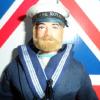
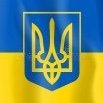
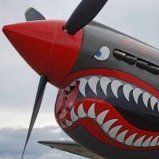
copy.thumb.jpg.d8f94c146f5d2da12880c4799901d6dc.jpg)
